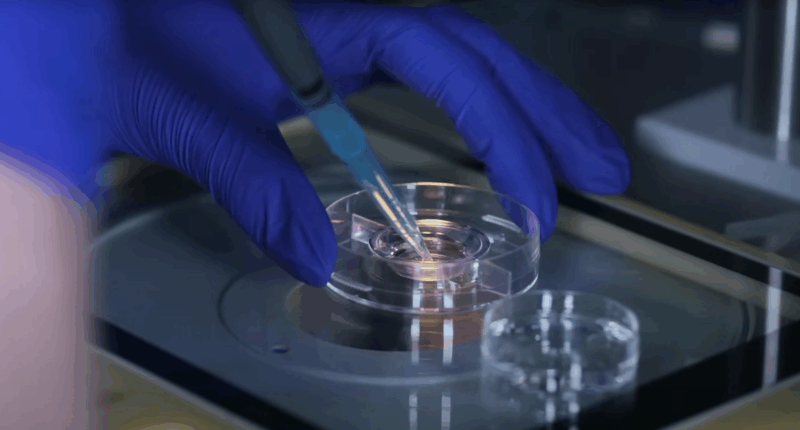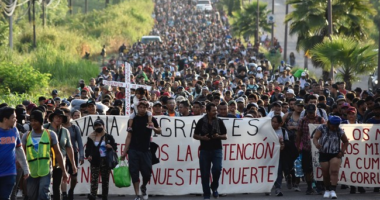When faced with infertility, Ericka Andersen turned to in-vitro fertilization (IVF) in hopes of finally having children of her own. A committed pro-life advocate, she believed IVF aligned with her values. But it wasn’t until she gave birth to her children that she learned how many extra embryos had been created in the process.
No one prepared Ericka for the weight that she would carry because of her decision. Years later, she lives with daily pain and grief over the nine lives she never expected to create but cannot ignore.
“Today, I have two healthy, amazing children [that] were conceived from this decision and I am everyday grateful for this,” she wrote recently in a Substack post. “However, I have deep anguish at the lives that I haven’t carried, the siblings of my children that they will never meet. The babies I will never know, whose eyes I will not see, whose bodies I will not rock, whose smiles I will not recognize.”
Too many families like Ericka’s begin their IVF journey without fully understanding the implications, risks, and decisions they will face. Behind the closed doors of fertility clinics, thousands of embryos are being created daily, but we have no idea exactly how many and what the fate is for each of them.
Families deserve to know what they are consenting to, and the public deserves insight into an industry that has significant ethical issues but is currently operating with little oversight.
IVF is a process in which a woman’s eggs are fertilized outside of the womb in hopes of increasing her chances of having a live birth. The IVF process consists of four main steps. The first is egg retrieval from the woman. Then comes the key step in the process, fertilization; it is at this point that the egg goes from a gamete to a human embryo with its own unique set of DNA. After the embryo is created, it is then transferred into the uterus, and, in most cases, embryo freezing follows to preserve the leftover embryos that did not get transferred.
After a woman goes through the IVF process, the question remains of what happens to the leftover embryos. Because a woman can typically only go through three IVF cycles, most families end their IVF journey with leftover embryos frozen, while some choose to destroy and discard their embryos immediately.
There is currently no definitive data on the number of embryos frozen in the United States. The only data clinics are required to report are success rates, clinical practices, and other data related to the demographics of parents choosing IVF.
In 2022, 184,423 assisted reproductive technology egg and embryo freezing cycles were reported to the Centers for Disease Control and Prevention. However, due to the lack of transparency mandates, it is unknown how many of these freezing cycles included embryos and how many embryos were frozen in each cycle.
Clinics often define success rates based on the number of live births but are not required to report how many embryos are created and destroyed in the process as well as the reasons for the destruction of each embryo. It is in the interests of both families and the public to have clear data on the number of embryos created and lost during IVF treatment.
Ericka Andersen isn’t alone; many families find themselves confused about their options before starting treatment. A study including more than 100 families suggested that women reported feeling underinformed about the options for their remaining embryos both before and after IVF treatment.
No family should be blindsided with extra embryos due to a lack of clarity before treatment. This gap in patient knowledge raises serious concerns about how many families enter IVF without fully understanding its long-term consequences and the fate of extra embryos created in the process.
Today, millions of individual embryos are frozen on ice in America. Despite possessing unique DNA and inherent dignity, every one of them remains subject to the whims of clinical staff and evolving technologies. The ethical issues at hand demand reconsideration of how embryos are handled in clinical settings.
“What about me, stuck in limbo, fully believing these embryos are God-created life? They have DNA, eye color, gender, and so much more already pre-determined. These are not ‘cells’ — these are human beings just waiting to live. And I made them,” Ericka wrote.
“If I believe life begins at conception, and I do, there are nine lives sitting on ice in a freezer that bear my DNA.”
Families like Ericka’s deserve the truth. Life-altering decisions should never be the result of a lack of clear understanding. Ericka’s story serves as a stark warning, reflecting the reality faced by hundreds of families and thousands of embryos whose inherent dignity demands greater transparency, largely hidden from ethical oversight.
Ansley McGalliard is a Texas native and political science student at Texas A&M University. She currently serves as a family policy intern at the Texas Public Policy Foundation, where she works to strengthen families and protect the rights of parents and children. Noah Torres is a policy analyst for the Center for Health and Families at the Texas Public Policy Foundation.









